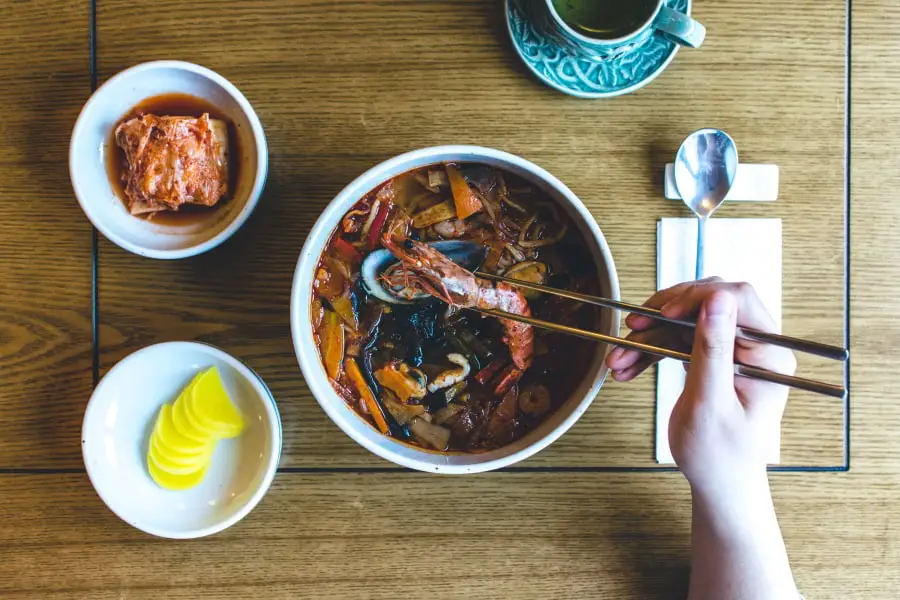
Beauty is severely underrated in our present cultures. Utilitarian methods relying on pragmatics and ‘what works’ has taken the lead. The most important element has been ejected from the mix, the human element. We know this, we feel it. But what does Aesthetics have to do with being human?
An aesthetic person understands the central role beauty plays in the human experience. They know there is a perfection out there somewhere, because they know no matter how beautiful something looks, sounds, feels, or tastes, it is not quite perfect. They search for the beauty that makes us whole.
How can you become someone who can recognize this part of our existence? How can you help your child enjoy all the wonders that true beauty can provide? These next five aspects can unlock limitless joy in the simple beauty that surrounds us at every turn. The most glorious will be to see it appear in your child’s eyes.
Contents
- #1 An Aesthetic Person Recognizes The Importance of Beauty
- #2 Aesthetic People Appreciate The Beauty They See Around Them
- #3 Aesthetics Is Not Solely Centered On Sight, It Can Involve Sound
- #4 Taste Can Be a Valuable Sense In Discovering the Beauty In A Culture
- #5 Aesthetics Is Not Simply Based On a Person’s Pleasurable Experiences
- The Aesthetic Person’s Takeaway…
#1 An Aesthetic Person Recognizes The Importance of Beauty
If being human has no ultimate goal and it matters little how we carry out the project of life, then that life carries no meaning and no need for beauty. It is not just a hope we have that this could be wrong, we know it is deep down. Beauty is everywhere for a reason. It matters.
What is beauty, but an imperfect impression of the perfect?
The Japanese culture throughout history has had a fascination with perfection and imperfection. If such a wide spectrum of aspects can be spoken of in collective terms, historical aesthetics in the Japanese culture has been a window into how they see their imperfect lives in the midst of an environment striving towards the ultimate perfection.
In an article published in The Journal of Aesthetic Education by the University of Illinois Press, Robert Wicks dives deep into how we see the Japanese Aesthetic from years past through our modern lens. In their culture for thousands of years, this juxtaposition of the perfect and imperfect has been their way of placing their finger on beauty and bowing to its relevance and importance.
To teach this to children all that is needed is to guide them in the search for the things that inspire them. When they see you inspired by the beautiful in all its forms, they will begin to search for what inspires them. They will learn by what you do, much more than what you say.
Let them see you appreciate the beauty in the everyday, in the people that many overlook, and in the human experience, which can even include sacrifice.
Let them see you strive, fail, stand back up, and drive forward again. That is beautiful. That is just as meaningful as a well designed cathedral, an impeccably performed symphony, or a cliff-side painting of a snow covered valley in the Alps.
Show them the beauty in the pursuit of perfection. The truly aesthetic person always peruses, always searches, and never settles for the counterfeit. The journey toward perfection, the completion of our true selves is beauty in itself.
There is a perfection that we have always sought, even though we know we will never reach it in this life. Yet, the aesthetic person will always seek.
Here is an example of a video that touches this. It is meant to remind you of the beauty of reaching for that thing that is just out of our grasp, the thing outside of ourselves.
Now, that’s beautiful.
#2 Aesthetic People Appreciate The Beauty They See Around Them
What we see has a great impact on our outlook on life, our moods, and how successful we are at the things we do. The grey walls of Kilmainham Gaol, the famous prison in Dublin, Ireland will always be a picture in my mind. The despair hung in the air, and the stories gave it a voice.

How much more can the beauty that we see mold and shape us and our children. It is not enough that we apply paint to a wall.
- We have to create our environments with purpose
- visit the places that inspire us
- give the proper respect that beauty deserves in our everyday environments
We understand the idea of beauty in the things we see, because we are immersed in it all day. Its absence is immediately noticed and its presence is a breath of fresh air.
How can we teach our kids to appreciate the value of what we see without it devolving into superficial consuming? It is the fact that it must be guided by the total good character in us and not given a higher portion of our thoughts than it deserves. See my article on the good character that the martial arts can form in your child.
For the average person, this is not the problem. The meaning and value of beauty in all its forms is overlooked more often, and one or two aspects are elevated. Physical beauty of a person is emphasized while the beauty of character, personality, and intelligence is downplayed.
Yet, beauty in its proper place is an amazing gift that we can give to our children. The Aesthetic person understands that it is everywhere and in many forms.
Aesthetic People Understand The Value of Good Architecture
I have visited many buildings all around the world. Their design intent is very noticeable from the first time you see them. There is either a sense that they are designed for humans and what they see as pleasing, or in direct opposition to this.
I have been in grand soaring rooms that made the individual seem insignificant and an invader. I have also been in rooms rising to heights of 5 stories that drew in visitors with awe and wonder. The human scale can be mathematically defined and then expanded upon to create such environments.

Beauty in architecture is simple to define. It is a structure designed with the human as the central focus. The experience of the human, not only in the pragmatic sense, but the spiritual and emotional sense gives it meaning. This is beauty. We see ourselves in the walls and columns.
The sanctity of life and the human experience is at the heart of architectural beauty. Sure, there is shock and a message in those works that set themselves against this notion, but information conveyed does not equal the sublime.
When we recognize craftsmanship and innovation directly applied to the human condition. We see the beauty. Art and architecture have different functions. Architecture has the added element of function that it must fulfill which sends it into new realms.
In another article in The Journal of Aesthetic Education architecture is studied in its own right, apart from art. Even when I was in my junior year of architecture school at the University of Tennessee, we rarely referred to our building, study, or degree separate from art. The building itself is called the Art and Architecture building.
This study critiques that understanding and probes deeper into the depths of the meaning and necessity of aesthetics in architecture.
Art Is a Prime Focus For Aesthetics
Most of us have been to museums and art galleries. I have seen the great paintings, sculptures and photos of the world in some of the most famous locations. What hit me the most was simply being in the presence of greatness.
There are many forms of beauty in art. Some see the ‘modern’ art of the 20th and 21st century as just another branch of the same tree. I disagree wholeheartedly. Again, these attempts at art try to convey a message of ‘change’ or critique of traditional forms of art and society.
Beauty has at its root the human experience and condition. Most of these modern versions are parodies of the human foundations of the traditional understandings of our relevance. This is why it makes us uncomfortable, perplexed, and at times revolted.
The aesthetic person understands that art is not made in spite of humanity, but in service to it. Without a humans hand, perspective, and sense of place in the universe there would be no art. This is the essence of why we inherently know that many forms of what some call art is not meant to be beautiful. And that is the central problem.
Art is to remind us of the thing in which we long for, and yearn for to make us truly what we were created to be. It can point to the struggle and suffering that causes us to stumble, but it is still us at the center.
This lesson to our children will bring humbleness and gratitude for life and those around them. They will understand beauty and the role it plays in their life. Art can help them connect with the humanity of others in the past and to understand the societies in which they live.
#3 Aesthetics Is Not Solely Centered On Sight, It Can Involve Sound
Some of the most beautiful things I have experienced in my life have been with my eyes firmly shut. Sound can inspire us to reach for the perfection. The aesthetic person can feel the pull toward it.
We can teach our children about some of the most pivotal historical events and dramatic stories through symphony, opera, and various music types. There is no doubt that the spoken word can also do the same.
One of the most pleasurable times you will have with children is to see the wonder caused by the reading of a favorite book. They are captivated by the images in their mind and transported to wonderful lands with the most interesting characters.
All of this can be seen as well in the reading of poetry, theatrical performances, and even simple musical recitals. The power of sound is something that major film makers down to beginning Youtubers understand. It can evoke emotion, thoughts, and even actions in the hearer.
All of this can be used to create beauty. It does not have to be beautiful to cause reactions, but instances where beauty is rejected are immediately apparent. Though a message may be conveyed, the art and beauty is lost.
We can lead our kids through this wonderful journey by slowly tuning out the popular corrupted forms of these masterpieces and introducing the originals that have stood the test of centuries.
Though some things may be popular in our short lifetimes, those things that have been repeatedly propagated by countless generations before us are the things that are truly great. They will live on after the fads of our time have long been forgotten. Beauty doesn’t change, even if we do.
#4 Taste Can Be a Valuable Sense In Discovering the Beauty In A Culture
We all have experienced the exquisite feeling of that one bite that surprised us and sent our brains racing to define it. Our children many times have only understood the simple joys of too much sugar. Getting them to try the creations that push their tiny pallets is introducing them to yet another form of the pursuit of perfection.

An aesthetic person can learn infinitely more about a culture than one not in tune with how important using all the senses is. Food like language is an essential part of a culture. It conveys so much about the people and places that culture comes from that there are some aspects of a society that can only be learned from it.
Many cultures have very strict standards about their foods, whether it is for religious reasons or purely cultural. There is a sense of seeking the perfection and beauty that these offerings can show about those who prepare them.
This is an easy way to invite children to follow someones journey toward the beautiful. They can sample it first hand and step out of the ordinary.
Though, admittedly this will be much harder for some children than others. As well, the roles of parents and children must be firmly established in the home before they will trust you with their palettes. For many children, trying new tastes is akin to hand-gliding over the Rockies.
If the discipline you have established in their daily lives allow for it, you can help your child experience such wonders of created perfection. The experience can be a culinary world exploration. Learning of the diversity of the human experience is beauty and is one of the great joys of aesthetic people.
#5 Aesthetics Is Not Simply Based On a Person’s Pleasurable Experiences
Sometimes we have to rise to the level of the beauty we seek. Though aesthetic beauty is made with humanity at its center, sometimes we must improve ourselves in order to appreciate and participate in it. Let’s look at an example.
Anyone who has read a Shakespearean play knows that it takes at least one act to ‘get into’ the Olde English and prose in which it is written. The journey is worth it and once that hurdle is crossed, the story comes alive.
Another example along the same lines it learning a foreign language. The rules of grammar will never come fast enough to the mind to be able to actually use them.
They are taught by many instructors to students who haven’t developed a working knowledge of a language yet, simply because it is easy to test. The problem is you are learning grammar and not the language.
What happens to so many that learn a language to fluency is that they come to a point of realization. They have to let go and just let the language flow over them. When the language begins to form images and understanding in their mind, they experience elation. They have crossed the hurdle and can now enjoy the language and use it as it was meant to be used.
In the same way, many forms of beauty are above us as children. For our children we have to train them to rise to the level of understanding and competency necessary to appreciate it. This will be met with resistance much of the time.
Other forms of easily accessible stimuli will incessantly compete for their attention. It is our job as parents to quiet the noise and offer them the best environment for exploration of the forms of beauty that really matter.
The Aesthetic Person’s Takeaway…
Aesthetic minded people truly understand the important role of beauty in our lives. It provides meaning in our spaces, why we are there, and what the purpose of our actions there are.
Art, architecture, music, poetry, theater and so many other forms of striving toward perfection show us others on their journeys. It is so easy to ignore with the competing corporate slogan oriented media that surrounds us. Yet, it is vital that we fight for the beauty in our lives.
There is something that we all know that is outside of us and that pulls us to strive toward it. There is a perfection that we know is there, because we know we haven’t found the truly perfect yet. The fact that we know we haven’t attained it attests to its existence.
To truly help our children be aesthetic people, we have to teach them the importance of not only the things we consider important, but the need for the fight to preserve the things we consider beautiful.
